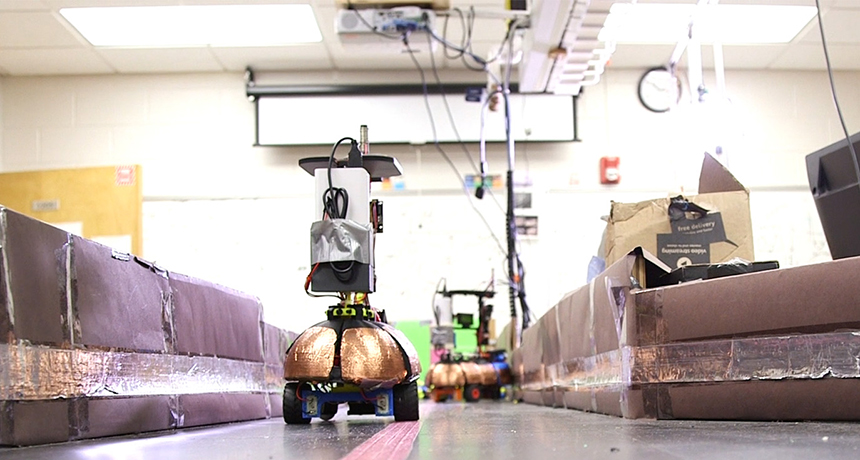Here’s what robots could learn from fire ants
In tight quarters, sharing the work equally leads to traffic jams

CROWD CONTROL Teams of robots working in tight, crowded spaces (like those above) could work more efficiently if a few bots do most of the work.
Georgia Tech